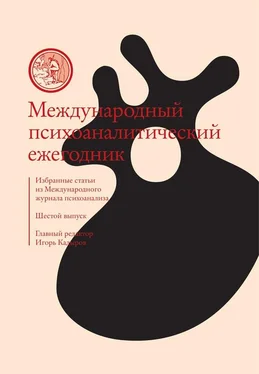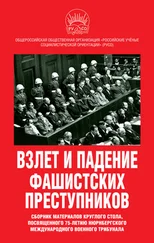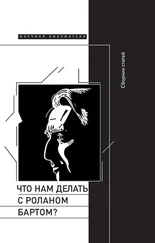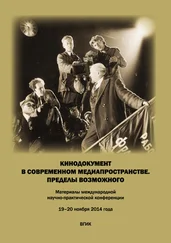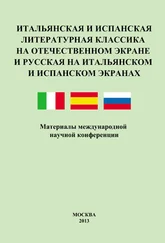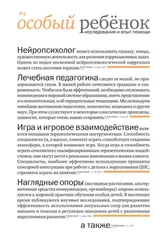Fromm E . (1955). Remarks on the problem of free association // Stern D.B., Mann C.H., Kantor S., Schlesinger G., editors. Pioneers of interpersonal psychoanalysis, 128–134, 1995. Hillsdale, NJ: Analytic Press.
Gadamer H. – G . (2004). Truth and method. Weinsheimer J., Marshall D.G., revised translation from the 2nd edition in German (first published in German, 1965). London: Continuum.
Galatzer-Levy R.M . (2004). Chaotic possibilities. Int J Psychoanal 85:419–441.
Gill M.M. (1983). The interpersonal paradigm and the degree of the therapist’s involvement. Contemp Psychoanal 19:200–237.
Harris A . (2008). Gender as soft assembly. New York; London: Routledge.
Hirsch I . (1996). Observing-participation, mutual enactment, and the new classical models. Contemp Psychoanal 32:359–383.
Hirsch I . (2000). Interview with Benjamin Wolstein. Contemp Psychoanal 36:187–232.
Hirsch I . (2014). The interpersonal tradition: The origins of psychoanalytic subjectivity. Hove: Routledge.
Hoffman I.Z. (1998). Ritual and spontaneity in the psychoanalytic process: A dialectical-constructivist view. Hilldale, NJ: Analytic Press.
James W . (1890). Principles of psychology. New York, NY: Henry Holt.
Kahn L. (2013). If one only knew what exists! // Levine H.B., Reed G.S., Scarfone D., editors. Unrepresented states and the construction of meaning, 122–151. London: Karnac.
Levenson E.A . (1972). The fallacy of understanding. New York, NY: Basic Books.
Levenson E.A . (1981). Facts and fantasies: On the nature of psychoanalytic data // Feiner A.H., editor. The purloined self: Interpersonal perspectives in psychoanalysis, 97 – 110, 1991. New York, NY: Contemporary Psychoanalysis Books.
Levenson E.A . (1982). Playground or playpen // Feiner A.H., editor. The purloined self: Interpersonal perspectives in psychoanalysis, 127–133. New York, NY: Contemporary Psychoanalysis Books, 1991.
Levenson E.A . (1983). The ambiguity of change. New York, NY: Basic Books.
Levenson E.A . (1985). The interpersonal (Sullivanian) model // Feiner A.H., editor. The purloined self: Interpersonal perspectives in psychoanalysis, 151–165, 1991. New York, NY: Contemporary Psychoanalysis Books.
Levenson E.A. (1988). Real frogs in imaginary gardens: Facts and fantasies in psychoanalysis // Feiner A.H., editor. The purloined self: Interpersonal perspectives in psychoanalysis, 211–223, 1991. New York, NY: Contemporary Psychoanalysis Books.
Levenson E.A. (1991). The purloined self: Interpersonal perspectives in psychoanalysis. Feiner A.H., editor. New York, NY: Contemporary Psychoanalysis Books.
Levenson E., Hirsch I., Iannuzzi V . (2005). Interview with Edgar A. Levenson, 24 January 2004. Contemp Psychoanal 41:593–644.
Lewin K. (1935). A dynamic theory of personality: Selected papers of Kurt Lewin. New York, NY: McGraw-Hill.
Lionells M.L., Fiscalini J., Mann C., Stern D.B., editors. (1995). The handbook of interpersonal psychoanalysis. Hillsdale, NJ: Analytic Press.
Mitchell S.A . (1993). Hope and dread in psychoanalysis. New York, NY: Basic Books.
Mitchell S.A . (1997). Influence and autonomy in psychoanalysis. Hillsdale, NJ: Analytic Press.
Murphy G., Cattell E . (1952). Sullivan’s field theory // Mullahy P., editor. The contributions of Harry Stack Sullivan: A symposium on interpersonal theory in Psychiatry and Social Science, 161–179. New York, NY: Hermitage House.
Piers C. (2000). Character as self-organizing complexity. Psychoanal Contemp Thought 23:3 – 34.
Seligman S . (2005). Dynamic systems theories as a metaframework for psychoanalysis. Psychoanal Dialog 15:285–319.
Stern D.B. (1983). Unformulated experience. Contemp Psychoanal 19:71–99.
Stern D.B . (1997). Unformulated experience: From dissociation to imagination in psychoanalysis. New York; London: Routledge.
Stern D.B. (2004). The eye sees itself: Dissociation, enactment, and the achievement of conflict. Contemp Psychoanal 40:197–237.
Stern D.B. (2010). Partners in thought: Working with unformulated experience, dissociation, and enactment. New York; London: Routledge.
Stern D.B . (2012). Implicit theories of technique and the values that inspire them. Psychoanal Inq 32:33–49.
Stern D.B . (2013a). Field theory in psychoanalysis, part 1: Harry Stack Sullivan and Madeleine and Willy Baranger. Psychoanal Dialog 23:487–501.
Stern D.B . (2013b). Field theory in psychoanalysis, part 2: Bionian field theory and contemporary interpersonal/relational theory. Psychoanal Dialog 23:630–645.
Stern D.B. (in press a). The interpersonal field: History and politics // Relational freedom: Emergent processes in the interpersonal field. Hove: Routledge.
Stern D.B . (in press b). Relational freedom: Emergent processes in the interpersonal field. Hove: Routledge.
Sullivan H.S . (1940). Conceptions of modern psychiatry, 1953. New York, NY: Norton.
Sullivan H.S . (1953). The interpersonal theory of psychiatry. New York, NY: Norton.
Tauber E.S . (1954). Exploring the therapeutic use of counter-transference data. Psychiatry 13:332–336.
Thompson C.M . (1961). Interpersonal psychoanalysis: The selected papers of Clara M. Thompson. Green M., editor. New York, NY: Basic Books.
Wolstein B . (1959). Countertransference. New York, NY: Grune & Stratton.
Ответ Лафарж Майклу Фельдману и Доннелу Б. Стерну
Люси Лафарж
LaFarge ’s rejoinder to Michael Feldman and Donnel B. Stern. Int J Psychoanal (2014) 95:1299–1304.
Два комментария к моей статье поднимают вопросы, значимые как для раздела «Психоаналитические дискуссии», так и для сообщества. Они касаются возможностей диалога между психоаналитиками, работающими с разными моделями и концепциями. Я представила статью, где описала определенную теоретическую модель, проиллюстрировав ее обработанным материалом, который, как я думаю, показывает возможности данной модели. Однако ни один из дискутантов не рассмотрел полностью ни собственно показанную мною теоретическую модель, ни принципиально важную, на мой взгляд, привязку модели к создаваемому на ее основе клиническому подходу. Это меня озадачило. Впрочем, я думаю, что одновременное рассмотрение самой статьи и комментариев к ней участников дискуссии освещает некоторые разногласия, возникающие сегодня вокруг концепций фантазии и переноса. Обращаясь в своем ответе к отдельным комментариям участников дискуссии, я также попытаюсь обрисовать более широкий круг проблем и остановлюсь на связи между теорией и практикой в моей работе и на отличиях между подходами дискутантов и моим собственным.
Читать дальше
Конец ознакомительного отрывка
Купить книгу
